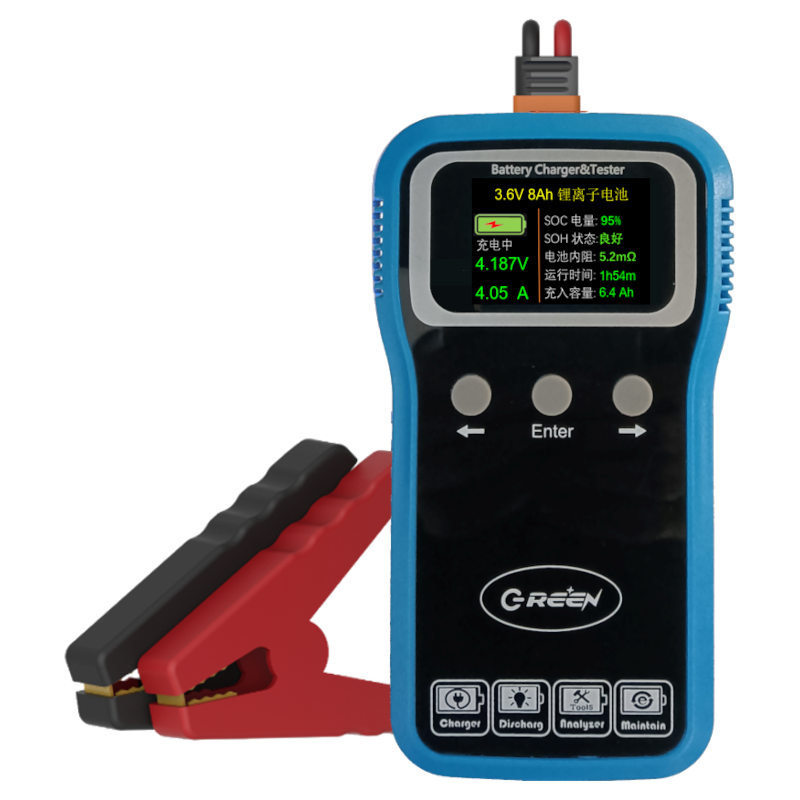Information Center
How Automotive Mechanics Utilize Car Battery Tester for Automotive Battery Diagnosis and Maintenance
Published:2024-11-06 17:11:22 Author:admin Views:20In the realm of modern automotive repair, the automotive battery serves as a crucial component for vehicle start-up and operation, with its performance and health status being of utmost importance. To ensure the reliable functioning of automotive batteries, automotive mechanics frequently employ a professional tool—the Car Battery Tester—for precise diagnosis and maintenance of automotive batteries. This article will delve into how automotive mechanics leverage this tool to ensure optimal battery performance.
I. Basic Functions and Principles of Car Battery Tester
The Car Battery Tester is a professional device integrated with modern sensing technology and data processing capabilities. It rapidly and accurately measures key parameters of automotive batteries, including voltage, internal resistance, and cold cranking amperage (CCA). These parameters are vital for assessing battery health, predicting remaining lifespan, and diagnosing potential faults.
Voltage Measurement: Detects the static voltage of the battery to determine if it is in a normal charged state.
Internal Resistance Testing: Measures the internal resistance value of the battery to evaluate its charging and discharging capabilities and degree of aging.
Cold Cranking Amperage Testing: Simulates the battery's starting ability in low-temperature environments to verify its performance under adverse conditions.
II. Diagnosis Steps
Preparation and Connection:
Ensure the vehicle's engine is turned off to avoid accidental startup during testing.
Use the Car Battery Tester's connecting cables to clip onto the battery's positive and negative terminals, ensuring secure and safe connections.
Executing the Test:
Turn on the Car Battery Tester's power and select the appropriate test mode (e.g., voltage test, internal resistance test, or CCA test).
Wait for the tester to complete the measurement and record the test results.
Result Analysis:
Compare the test results with the specification parameters provided by the battery manufacturer to assess the battery's current performance and remaining lifespan.
Pay attention to any warning or error prompts on the tester, which may indicate specific issues with the battery.
III. Maintenance Recommendations
Charging and Maintenance:
If test results indicate low battery voltage or high internal resistance, charging or deep discharge recovery may be required.
Regularly perform battery maintenance, including cleaning battery terminals, checking for damage to the battery case and connecting cables.
Replacement Advice:
When test results significantly deviate from normal ranges or the battery has reached its expected lifespan, advise customers to replace it with a new one.
Provide battery recommendations suitable for the customer's vehicle and needs, explaining the importance and potential benefits of battery replacement.
Preventive Measures:
Educate customers to avoid prolonged use of vehicle electrical equipment without starting the engine to reduce battery discharge.
Advise customers to regularly check battery status and follow the manufacturer's maintenance guidelines.
IV. Conclusion
The Car Battery Tester is an indispensable tool in the hands of automotive mechanics, providing rapid and accurate battery diagnostic capabilities that help mechanics accurately assess battery health and offer professional maintenance advice to customers. By reasonably utilizing this tool, automotive mechanics can not only improve repair efficiency but also ensure the reliability and safety of customers' vehicle batteries, thereby enhancing customer satisfaction and trust.
In the modern automotive repair industry, utilizing high-tech tools for precise diagnosis has become a trend. The Car Battery Tester, as a representative of this trend, is playing an increasingly important role.
IntroductionGolf carts serve as vital transportation tools on golf courses, and their performance and reliability are crucial for enhancing player experience an···
The battery pack is the heart of a golf cart, silently powering every acceleration and climb on the green. However, battery degradation often goes unnoticed, mu···
The battery pack is the heart of a golf cart’s power system, yet maintaining it has long been a challenge for technicians. Traditional troubleshooting methods—···
For golf course managers, ensuring smooth and efficient operations is crucial for providing a memorable experience for golfers and maintaining the reputation of···






